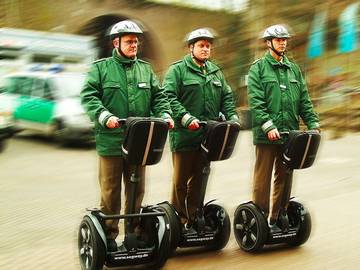What to KnowSegue means "to move without stopping from one topic, song, etc., to another." Segway, on the other hand, is a trademarked name for an electric transportation device.
Most of the most commonly confused words in English are old pairs: affect and effect, or discrete and discreet. But a new pair has developed in the last dozen or so years: segway and segue. You see it in informal writing, and in constructions like "let me segway to a new topic."

Grammar Police, Segway Division
The word you want to use in such cases is segue. This use of segue is defined in our Dictionary as "to make a transition without interruption from one activity, topic, scene, or part to another." This use comes from music—there, the direction segue means to proceed directly on to the next thing without stopping, or to perform the next piece of music like the previous piece. This segue was adopted into English from Italian, where segue means "there follows."
The other segway is actually a trademark: it refers to a motorized, two-wheel personal vehicle. The confusion is understandable: both segway and segue share a pronunciation, and the spelling segway looks more logical to us than segue. It's become common to see Segway tours, or security on Segways—and perhaps because of the proliferation of Segways, it's becoming more common to see segway in print in place of segue.
The next time you need to use the word segue in print, remember: Segway should move far away from your prose. And if you still can't remember how to spell segue, try using move on instead.




